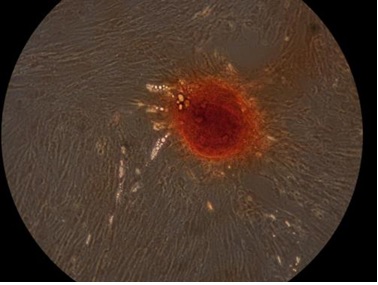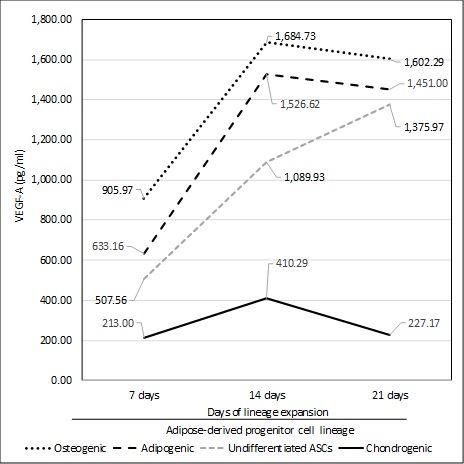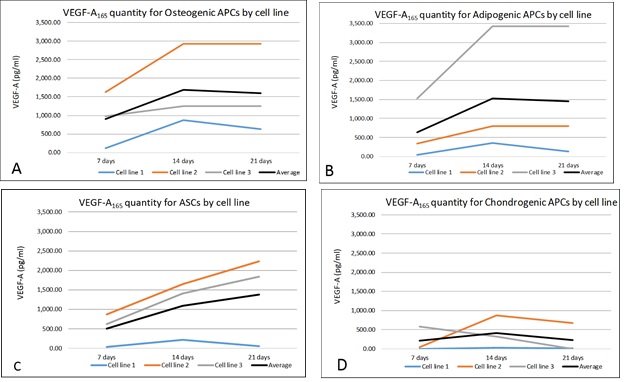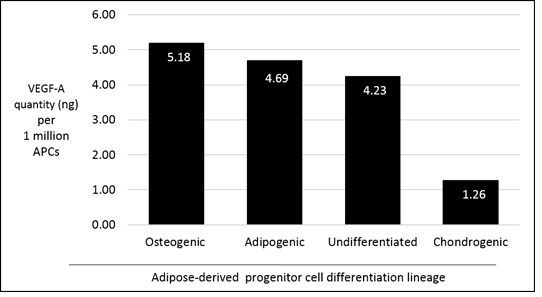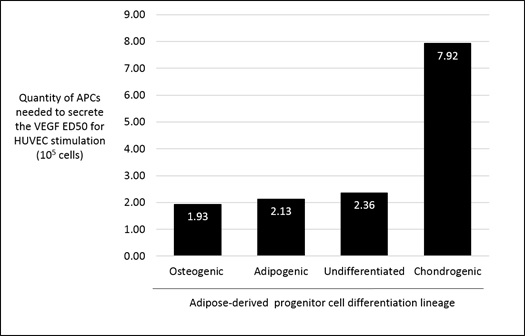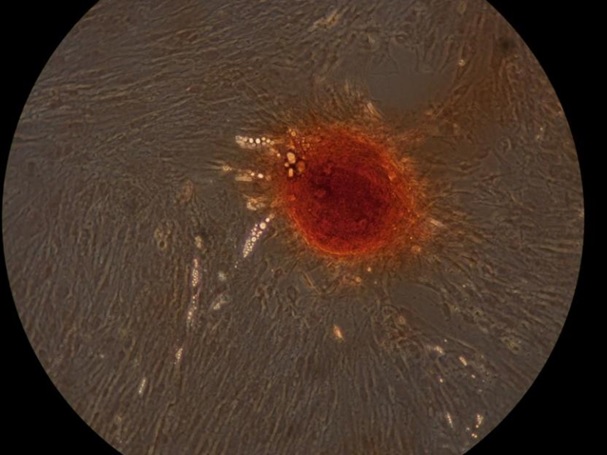
Figure 1 Study design: Beginning with fresh lipoaspirate, SVF was enzymatically isolated and the ASCs were expanded after plastic adherence. The ASCs were then split into three differentiation media for osteogenic, adipogenic, and chondrogenic progenitor development. The supernatant of each lineage was then sampled on culture days 7, 14, and 21 and the sVEGF-A165 quantities were determined by immunoassay. Similarly, first passaged undifferentiated ASCs were also expanded and comparatively tested.




